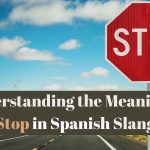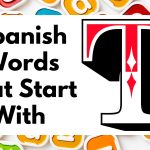Spanish poetry, spanning from Spain to Latin America, shows the power of language and culture. Looking into the works of poets like Federico García Lorca and Pablo Neruda helps us see their impact on world literature.
Lorca’s poems delve into human emotions and social issues, while Neruda’s work is rich in metaphors and sensuality. Exploring these poems helps us understand how they push and reshape artistic and cultural limits.
Spanish Poems for Beginners
If you’re just beginning to explore Spanish poetry, you might want to start with ‘Cultivo Una Rosa Blanca’ by José Martí.
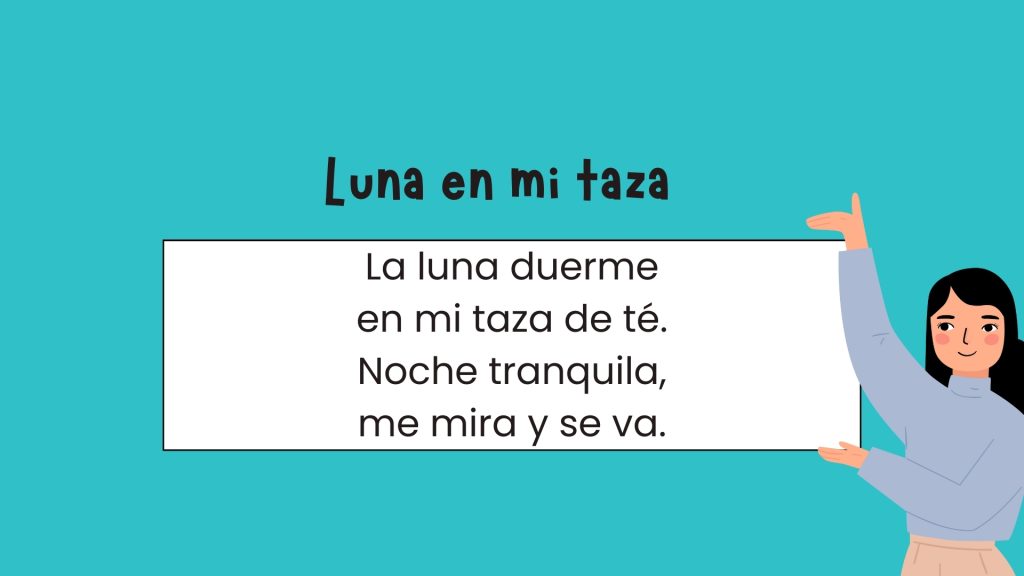
It’s a poem that talks about being kind and respectful—pretty straightforward stuff.
• Luna en mi taza
La luna duerme
en mi taza de té.
Noche tranquila,
me mira y se va.
The moon sleeps
in my teacup.
Quiet night,
it watches me, then leaves.
• Gato gris
Gato en el tejado,
canta sin voz,
mira la calle
como un dios.
Cat on the rooftop,
sings without sound,
watches the street
like a god.
• Flor de abril
Flor en la lluvia,
tan pequeña y fiel,
baila en el viento,
juega con la miel.
Flower in the rain,
so small and true,
dances in the wind,
plays with the dew.
• Mi amigo sol
Sol brillante,
ven a jugar.
Mis manos frías
quieren bailar.
Bright sun,
come play.
My cold hands
want to dance.
Dive deeper into the Spanish Present Perfect tense with our full guide.
Spanish Poems for Intermediate Learners
If you already know some Spanish, reading intermediate-level poems can really help you get better.
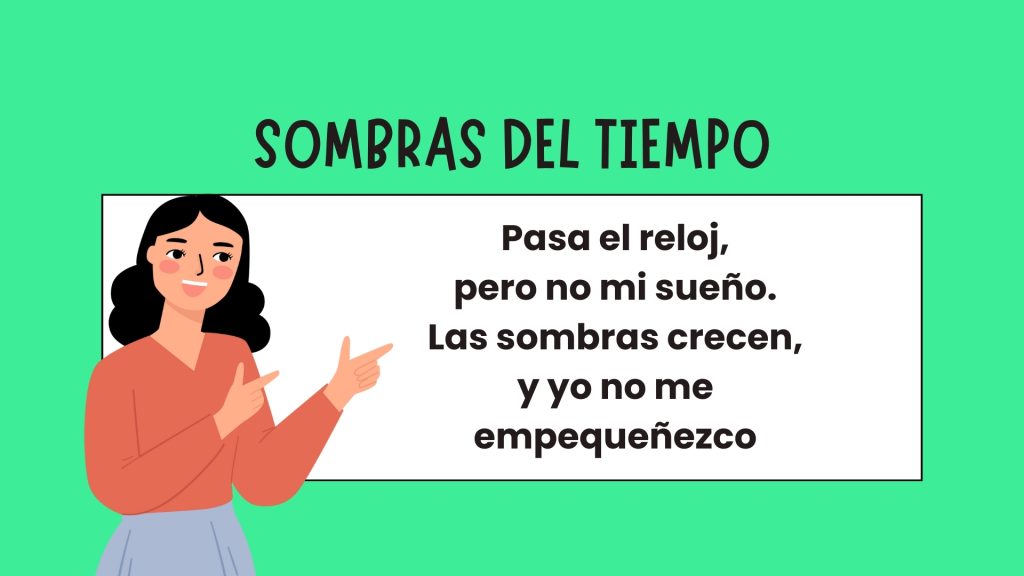
• Sombras del tiempo
Pasa el reloj,
pero no mi sueño.
Las sombras crecen,
y yo no me empequeñezco.
The clock moves,
but not my dream.
Shadows grow,
yet I do not shrink.
• Lluvia en la piel
La lluvia cae
sin preguntar.
Recorre mi piel
como un viejo cantar.
Rain falls
without asking.
It runs down my skin
like an old song.
• Mujer de papel
Mujer que escribe
con tinta azul,
guarda historias
bajo su tul.
Woman who writes
with blue ink,
keeps stories
beneath her veil.
• Noche que piensa
La noche no duerme,
solo finge callar.
Está pensando
en cómo soñar.
The night doesn’t sleep,
it only pretends to hush.
It is thinking
about how to dream.
These poems make you think and give you a taste of Spanish culture, too. Plus, tackling challenging texts is a great way to improve.
Spanish Poems for Advanced Learners
Advanced Spanish poems are a step up from intermediate ones, using complex language and deep themes that really make you think.
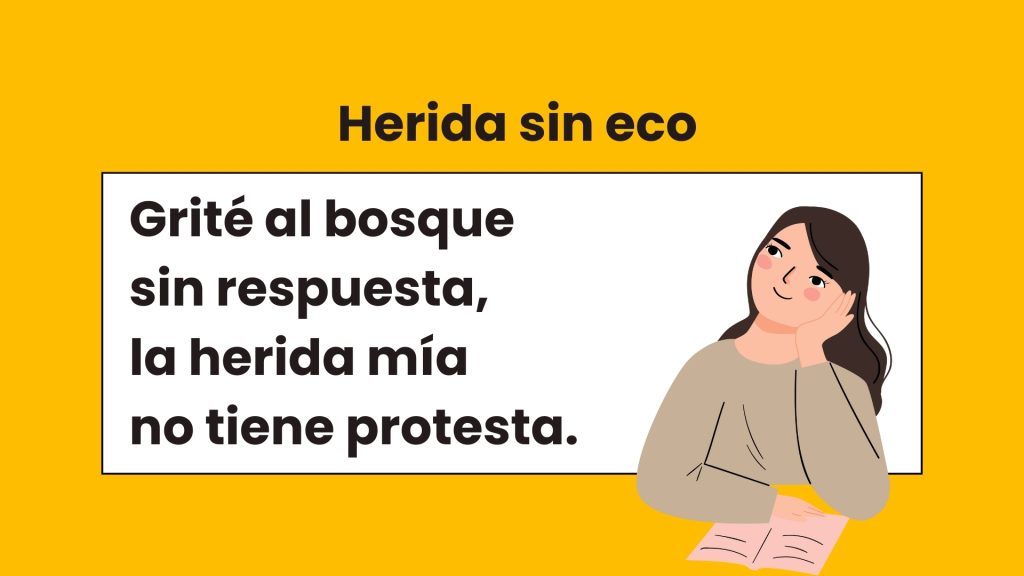
• Herida sin eco
Grité al bosque
sin respuesta,
la herida mía
no tiene protesta.
I screamed at the forest
without reply,
my wound
has no protest.
• Ciudad que respira
El concreto late,
el humo se enreda,
y cada paso
lleva una moneda.
Concrete pulses,
smoke tangles in air,
and every step
carries a coin.
• Náufrago del alma
En mí navega
un grito antiguo,
sin mapa, sin faro,
solo su abrigo.
Within me sails
an ancient cry,
no map, no beacon,
just its warmth.
• Relámpago interior
Un rayo parte
mi calma vieja,
y lo que era sombra
ahora se queja.
A bolt splits
my old calm,
and what was shadow
now complains.
When you read these poems, you’re not just boosting your Spanish skills—you’re also getting a taste of the rich cultural stories that shape the language.
What are the most famous Spanish poems?
Many Spanish poems are famous worldwide, showcasing the deep literary culture of the Spanish language.
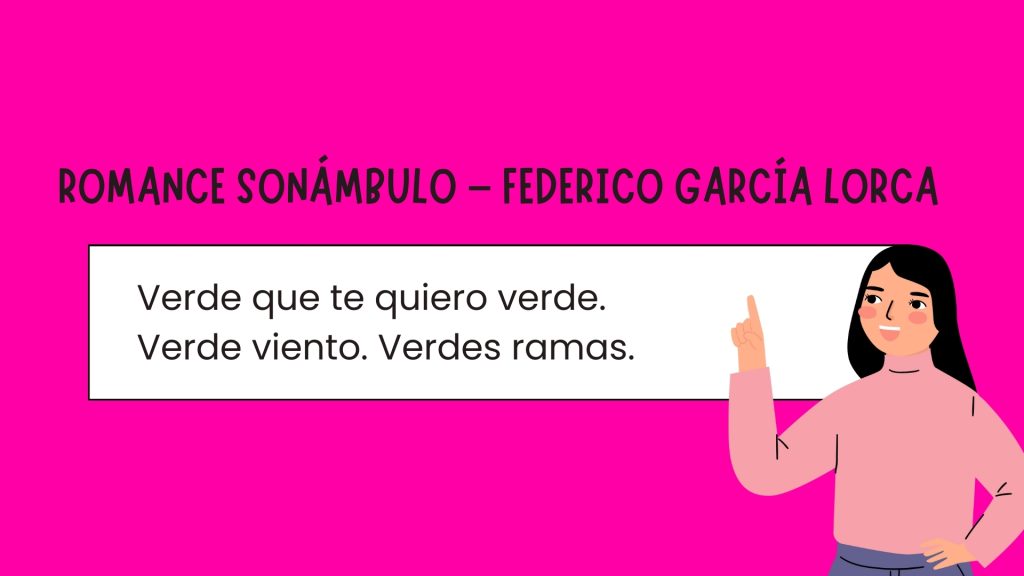
• Caminante, son tus huellas – Antonio Machado
Caminante, no hay camino,
se hace camino al andar.
Traveler, there is no path,
you make the path as you walk.
• Romance Sonámbulo – Federico García Lorca
Verde que te quiero verde.
Verde viento. Verdes ramas.
Green, how I want you green.
Green wind. Green branches.
• Canción del Pirata – José de Espronceda
Que es mi barco mi tesoro,
que es mi dios la libertad.
My ship is my treasure,
my god is liberty.
• Rima LIII – Gustavo Adolfo Bécquer
Volverán las oscuras golondrinas
en tu balcón sus nidos a colgar.
The dark swallows will return
to hang their nests on your balcony.
Each poem beautifully reflects themes of love, daily life, and nature. They strike a chord with readers everywhere, not just in Spanish-speaking places.
Discover what Santa is called in Argentina and how Papá Noel brings holiday joy.
Who is the most famous Spanish poet?
When talking about the most famous Spanish poet, Pablo Neruda often comes to mind.
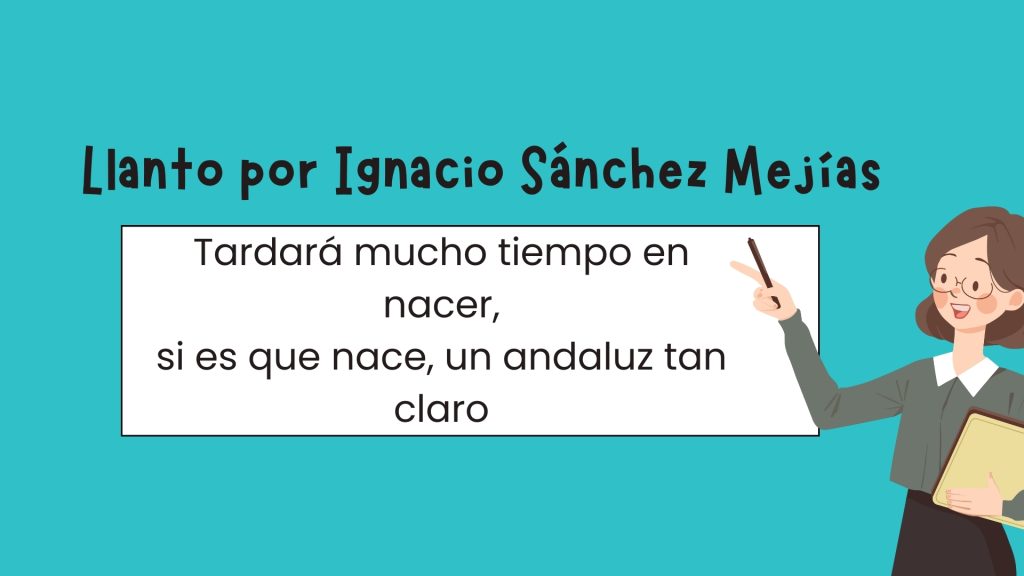
• La luna vino a la fragua – from Romancero Gitano
La luna vino a la fragua
con su polisón de nardos.
The moon came to the forge
with her bustle of tuberose.
• Llanto por Ignacio Sánchez Mejías
Tardará mucho tiempo en nacer,
si es que nace, un andaluz tan claro.
It will take a long time to be born,
if ever, an Andalusian so bright.
• Boda de Sangre
¡Ay, qué sinrazón! ¡No quiero ver más sangre!
Oh, what madness! I want to see no more blood!
• El poeta pide a su amor que le escriba
Amor de mis entrañas, viva muerte,
en vano espero tu palabra escrita.
Love of my guts, living death,
I wait in vain for your written word.
His poems are powerful and they really connect with people everywhere, crossing borders and languages.
What is the shortest famous poem?
One of the shortest famous poems is ‘In a Station of the Metro’ by Ezra Pound. It’s just two lines long but packs a big punch.

• Yo no soy yo – Juan Ramón Jiménez
Yo no soy yo.
Soy este
que va a mi lado sin yo verlo.
I am not I.
I am this one
who walks beside me without seeing me.
• Haiku by Octavio Paz
Luz, no sabes
lo que das
hasta que faltas.
Light, you don’t know
what you give
until you’re gone.
• Minimalismo – Anónimo
Te vi.
Me fui.
Sin ti.
I saw you.
I left.
Without you.
• Ceniza – Idea Vilariño
Te amé,
y fue
ceniza.
I loved you,
and it became
ash.
This poem is about a brief moment in a Paris subway and uses very few words to create a vivid picture.
Conclusion
In short, Spanish poetry is a colorful mix of culture and language. It ranges from simple pieces for beginners to complex ones for experts.
Diving into these poems helps us understand people’s lives through the unique views of Spanish poets.
Master the art of speaking fearlessly with Lingua Viva help.
Dayron is co-owner, and the heart of Lingua Viva. He is a licensed Educator and Interpreter with 15+ years of experience, and holds a graduate degree in Foreign Language Instruction. A native Caleño who creates a comfortable environment for his students. Dayron is loved by all and inspires confidence in his students when learning and speaking Spanish. He is also an avid comedian that loves to dance salsa.






